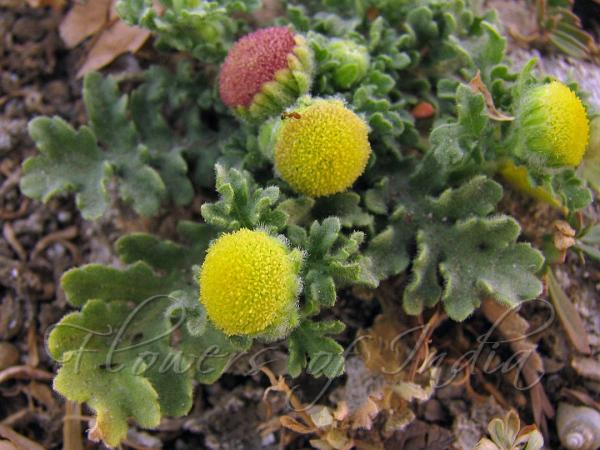|
| Madras Carpet |
|

|

| File size | 164019 |
| Original date | 5/3/12 7:25 AM |
| Resolution | 1080 x 810 |
| Flash | Flash did not fire, auto |
| Focal length | 6.0mm |
| Exposure time | 1/125s |
| Aperture | 4.0 |
| Focus Distance | |
| Metering Mode | Center weighted average |
| Camera make | Canon |
| Camera model | Canon PowerShot S5 IS |
| Sensor type | OneChipColorArea |
|
|
|
|
Photo: |
Botanical name: Grangea maderaspatana Family: Asteraceae (Sunflower family)
Synonyms: Artemisia maderaspatana, Grangea aegyptiaca, Tanacetum aegyptiacum
Synonyms: Artemisia maderaspatana, Grangea aegyptiaca, Tanacetum aegyptiacum
Madras Carpet is a herb commonly seen in flat bunches in harvested fields,
dry river and pond beds. This hairy, branched herb spreads from the roots
and grows up to 70 cm in height. The buds are white and woolly. The leaves
are alternate, stalkless, deeply cut, and divided into toothed lobes.
Yellow flowering heads are borne opposite the leaves, and are short-
stalked, rounded, and 8-10 mm across. The flowers are small, very numerous.
The involucral-bracts are ovate, thick, rigid, and hairy. The achenes are
cylindric, glandular, and about 2 mm long. The papus-hairs are connate,
ending in a short, fimbriate tube. Madras Carpet is widespread in India.
It is found in Western Ghats and NE India. It is globally found in
Indo-Malesia and Africa.
Medicinal uses: Leaves are regarded in India as a valuable
stomachic possessing deobstruent and antispasmodic properties, and are
prescribed as an infusion and an electuary in cases of obstructed menses
and hysteria.
Leaves are regarded in India as a valuable
stomachic possessing deobstruent and antispasmodic properties, and are
prescribed as an infusion and an electuary in cases of obstructed menses
and hysteria.
Medicinal uses:
 Leaves are regarded in India as a valuable
stomachic possessing deobstruent and antispasmodic properties, and are
prescribed as an infusion and an electuary in cases of obstructed menses
and hysteria.
Leaves are regarded in India as a valuable
stomachic possessing deobstruent and antispasmodic properties, and are
prescribed as an infusion and an electuary in cases of obstructed menses
and hysteria. | Identification credit: Neil Soares, Shrikant Ingalhalikar | Photographed at Nagpur, Maharashtra & Pasighat, Arunachal Pradesh. |
• Is this flower misidentified? If yes,